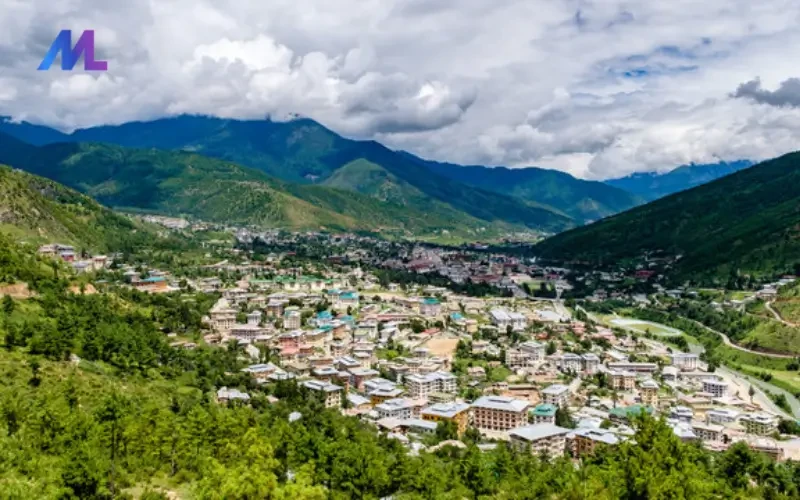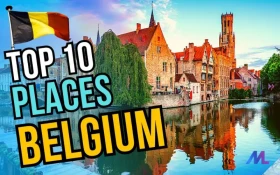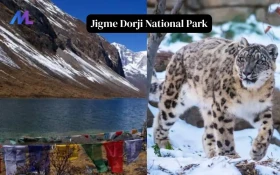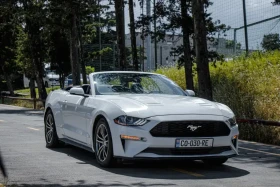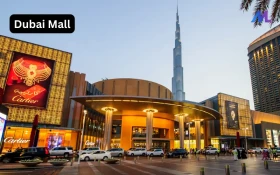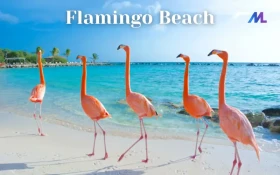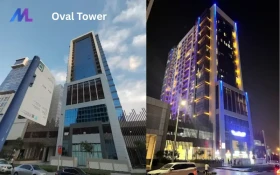A Complete Thimphu City Travel Guide: Discover Bhutan’s Heartbeat
Located amidst the lush green valleys of the Eastern Himalayas, Thimphu is the very heart of Bhutan — a perfect example of the balance between traditional and modern. It is the only capital city in the world that doesn’t have traffic lights, but it still vibrates with energy, creativity, and secret sophistication. From huge monasteries at the summits of cliffs to flexible street markets, Thimphu welcomes travelers to be in touch with the quiet and spiritual Bhutanese culture, which is in touch with nature.
While most of the world sees Bhutan as a remote and isolated kingdom, from Thimphu, the tourists meet the beautiful combination of the old cultural spirit and modern living. This practical guide will tell you everything you need to know, including how to get to Thimphu, where to stay, what to visit, and how to live the local way.
Getting to Thimphu
Thimphu has no airport of its own; the nearest Paro International Airport is located at a distance of approximately 50 kilometers away, which is a 1.5-hour drive. The two airline operators — Druk Air and Bhutan Airlines — provide flight service from major cities in Asia, including Delhi, Bangkok, Singapore, and Kathmandu.
If you are coming from India, the most common entry point will be Phuentsholi, which is the Bhutan-India border town. After this, the most scenic route is the twisting road through hills covered with pine trees, which takes about 5-6 hours.
Must visit: Top 10 Hotels and Resorts in Bhutan for 2025 | Luxury Stays in the Himalayas
Best Time to Visit Thimphu
The best time to visit the city is during spring (March to May) and fall (September to November). The air is clear, flowers are blooming everywhere, and festivals are adding color and dance to the city.
|
Category |
Hotel |
Highlights |
|
Luxury |
Taj Tashi |
Five-star comfort with a blend of modern luxury and Bhutanese design |
|
Mid-range |
Hotel Norbuling |
Cozy, clean, and great location near Norzin Lam |
|
Budget |
Khamsum Inn |
Simple, affordable, and walking distance to major spots |
Top Attractions in Thimphu
Tashichho Dzong – The Home of Power and Faith
Sitting beside the Wang Chhu River, Tashichho Dzong appears as an architectural wonder that now houses the King's offices and the central monk body. Pay a visit at dusk when it is glowing with bright light, marking its visibility like a fairy tale out of the Himalaya.
Buddha Dordenma – The Peace Giant
This Beth Buddha, who sits at a height of 169 feet, is Thimphu Valley’s great view area. Buddha Dordenma is the cathedral with 125,000 mini Buddha statues expressing peace and prosperity, hence it is one of the most captured places in Bhutan.
National Memorial Chorten
This white stup, which is constructed in memory of King Third, is the heart of spiritual life in Thimphu. The townspeople continuously circumambulate it, spinning prayer wheels and respectfully chanting, which serves as an idyllic fact of the Bhutanese faith.
Motithang Takin Preserve
The famous Takin is the national animal of Bhutan and is a mix between two animals goat and the antelope, and is believed to have been magically brought into existence by Lama Drukpa Kunley. This small reserve allows you to have a quiet forest walk with the setting of the beautiful Himalayan pine.
Changangkha Lhakhang
This ancient monastery is high above the city and has existed for the past many centuries since the 12th century. Parents come here with their newborn babies for blessings, and the view of the Thimphu Valley seen from the courtyard is breathtaking.
Simply Bhutan Museum
This museum is alive, which allows visitors to feel Bhutanese culture — do archery, keep butter churning, dress in traditional clothes, and taste local food all in one place.
Things to Do in Thimphu
Explore Centenary Farmers Market
This riverside market on weekends is a hub of activity with vendors selling everything fresh from the farm as well as incense, handmade crafts, and yak cheese. This is a window to the everyday life of the Bhutanese people — colorful, friendly, and fragrant.
Shop at Craft Bazaar
Craft Bazaar is a stop for souvenirs that you will remember Thimphu for. This place has local artisans presenting their craftsmanship at the stalls with wooden masks, silver jewelry, and traditional textiles.
Experience Thimphu Tshechu
Thimphu Tshechu, which occurs every autumn, is the biggest festival of Bhutan. People wear their beautiful, colorful costumes, monks dance with sacred masks, music, chants, and joy fills the air. It is an extraordinary opportunity.
Hike to Tango and Cheri Monasteries
A brief drive from the city will lead you to the paths for Tango and Cheri, these two peaceful monasteries among the pine trees. The paths are quiet and the view you get on the way is incredible.
Enjoy the Nightlife
You may be surprised by the nightlife in Thimphu. Space 34, Om Bar, and Club Ace offer live music and activities such as karaoke and DJ nights, which attract both the locals and the guests — a vibrant contrast to the city’s calm daytime.
Taste of Bhutan: Where Food Speaks Culture
Bhutanese cuisine is a projection of the people — simple, hearty, and fiery. Together with food, chilies and cheese turn dishes into more or less distinctive flavors that will be with you long after you try to recall.
Must-Try Dishes:
Ema Datshi: A spicy stew of chilies and cheese — Bhutan's national dish.
Phaksha Paa: Pork cooked with red chilies and vegetables.
Jasha Maru: A spicy chicken curry.
Momos: Steamed dumplings filled with minced meat or vegetables.
Suja: Salty butter tea served hot, especially in winter.
Where to Eat in Thimphu:
Folk Heritage Museum Restaurant: Enjoy authentic Bhutanese meals in a traditional setting.
Ambient Café: It is a good place to drink coffee, have sweets, and hold small talks.
Babesa Village Restaurant: A 400-year-old farmhouse ambiance for serving traditional cuisine.
Where to Stay in Thimphu?
|
Category |
Hotel |
Highlights |
|
Luxury |
Taj Tashi |
Five-star comfort with a blend of modern luxury and Bhutanese design |
|
Mid-range |
Hotel Norbuling |
Cozy, clean, and great location near Norzin Lam |
|
Budget |
Khamsum Inn |
Simple, affordable, and walking distance to major spots |
Tip: Book early during festival months when accommodations fill up fast.
Shopping in Thimphu
Thimphu is perfect for buying items made from handwoven textiles, traditional masks, Buddhist relics, and handmade crafts.
Norzin Lam Street: The central shopping street features art shops and boutiques.
National Handicrafts Emporium: A government-run shop where you can be sure of obtaining authentic products.
Original Bhutanese Crafts Bazaar: Eco-friendly and locally made products.
Travel Essentials & Local Etiquette
Visa & Permits: All tourist visitors (except Indians, Bangladeshis, and Maldivians) are expected to apply for a Bhutan visa, which should be arranged by a licensed tour operator.
Sustainable Development Fee (SDF): For international visitors, it is $100 per day.
Currency: Bhutanese Ngultrum (BTN) is the main currency; Indian Rupees (except ₹2,000 notes) are widely accepted.
Dress Code: Dressing modestly is required in monasteries.
Connectivity: Local SIMs (TashiCell or B-mobile) provide access to 44 G
Respect the Culture: Walk clockwise around the religious sites and always ask before you take photos in the temples.
Day Trips Around Thimphu
If time allows, explore the areas surrounding the city:
Dochula Pass (3,100 m): It is only 45 minutes down the road, where you will find a mountain pass with 108 chortens and a full range of Himalayan views.
Punakha Dzong: It is one of the most breathtaking fortresses and is situated 3 hours from Thimphu.
Paro Valley: It is the place where the much-famed Tiger's Nest Monastery is located, which is approximately 1.5 hours from Thimphu.
Sustainable Travel in Thimphu
Thimphu is a model of a zero carbon footprint; this is true for all of Bhutan, which is the only carbon-negative country in the world. You can help with this issue by :
-
Using reusable bottles.
-
Not using plastic bags.
-
Buying local crafts.
-
Respecting the environment and wildlife.
Doing the eco-conscious thing is not a choice here; it is part of the Bhutanese way of life.
Conclusion
The fact is, Thimphu is not just a city — it is an emotion. It is where monks are smiling at tourists, where rivers are whispering under prayer flags, and where time is slowing down just for you to breathe in the mountain air.
Thimphu captures the spirit of Bhutan — it is a combination of the symbolic, simple, spiritual, and vast humanity. Whether for two weeks or two days, the magic of this Himalayan city will live in your heart.
Related Blogs:
Get Ready to Explore the Hidden Treasures of Jigme Dorji National Park
Most Beautiful Monasteries to Visit in Bhutan
